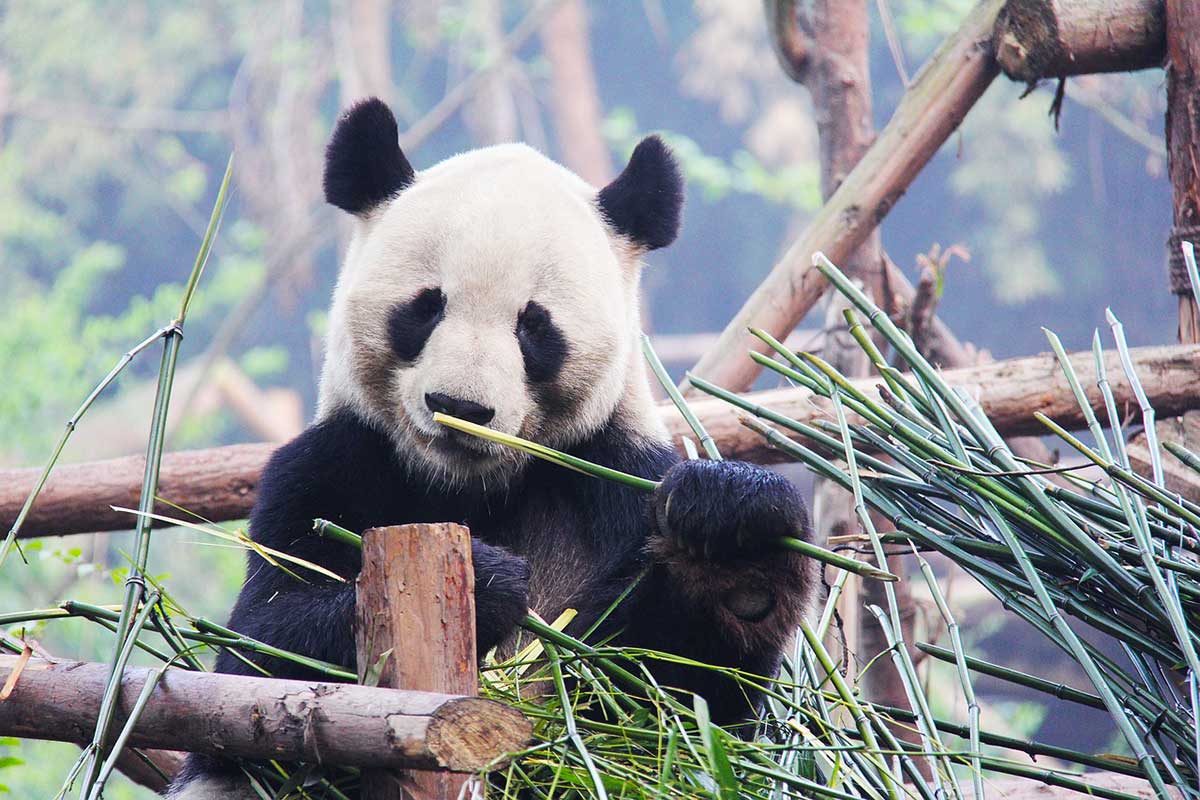Sichuan Panda Centers
Sichuan Province is undeniably the heart of giant panda conservation in China. It is here that the majority of efforts to protect and breed these iconic animals are concentrated, offering visitors an exceptional opportunity to observe them and support their survival.
The Main Panda Sanctuaries in Sichuan
Sichuan is home to several research and conservation bases, each with its own characteristics:
- The Chengdu Conservation Research Base of the Giant Panda, located just 10 kilometers north of Chengdu (about a 40-minute drive from the city center), is the largest center in terms of panda population, with approximately 120 individuals. Its main focus is panda breeding and public education about wildlife. It’s the perfect place to see many pandas, including adorable newborn panda cubs and even red pandas. Its proximity to the city makes it a very convenient option for a half-day visit. However, its popularity attracts a large number of tourists, especially during holidays, and panda viewing is often done from a distance.
- Further away, about an hour and a half drive from Chengdu, in its greater suburbs, is the Dujiangyan Base. This center focuses on providing medical assistance to wild pandas and preparing them for their return to the wild. With about 40 pandas, it offers a less crowded experience than Chengdu, allowing for closer encounters with the animals, including red pandas. A volunteer program is also offered. One drawback is that during rainy weather, the pandas may remain indoors, making them difficult to observe. Furthermore, being more remote, it incurs additional travel costs, and the volunteer program is expensive.
- About a two-hour drive from Chengdu, in the Aba Tibetan and Qiang Autonomous Prefecture, the Wolong Base is another crucial center. It also provides medical assistance and training for pandas for their reintroduction into the wild. With about 100 pandas, including those returned from abroad, Wolong offers a more natural setting and fewer crowds, allowing for closer observation. A volunteer program is also available. However, its more remote location requires a full-day visit and higher transportation costs, not to mention the cost of volunteering.
- Finally, the Bifengxia Base, located about a 2.5-hour drive from Chengdu in Ya’an Municipality, is dedicated to breeding and educating about wild animals. It houses about 60 pandas, including newborn panda cubs and pandas returned from abroad. Like Wolong, it offers a more natural setting and a less crowded experience. A volunteer program is also offered. The same drawbacks apply: it is further from Chengdu, involves higher travel costs for a full-day visit, and the volunteer program is expensive.
The Unique Experience of Volunteering with Pandas
For those seeking a deeper immersion, volunteering is available at the popular centers in Dujiangyan, Wolong, and Bifengxia. While this is a unique way to support panda conservation, it’s important to understand that direct contact with the animals is strictly prohibited, which may be disappointing for some.
The usual course of a volunteer day includes various practical and educational activities:
The adventure begins with preparing the pandas’ food, including breaking bamboo for 20 to 30 minutes, a task essential to their well-being. Volunteers then have the opportunity to observe the keepers feeding the giant pandas inside their enclosures, without directly intervening. The day continues with pancake-making (approximately 30 minutes), special treats for the pandas, followed by cutting bamboo leaves (20 to 30 minutes) for their daily diet. To complete the experience, a documentary film about giant pandas (approximately 30 minutes) is shown, offering valuable insight into their lives and the challenges of their conservation. At the end of the day, a volunteer certificate is issued, along with local souvenirs such as a T-shirt, a sailcloth bag, and postcards.
It’s important to note that requests for volunteering from both Chinese and foreign visitors are constantly increasing, making it difficult to secure a spot, especially in the summer. Furthermore, activities have evolved in recent years: it’s no longer possible to clean the panda enclosures or feed them directly. Of course, any physical interaction, such as hugging the pandas or taking selfies, is strictly prohibited for safety and animal welfare reasons.










